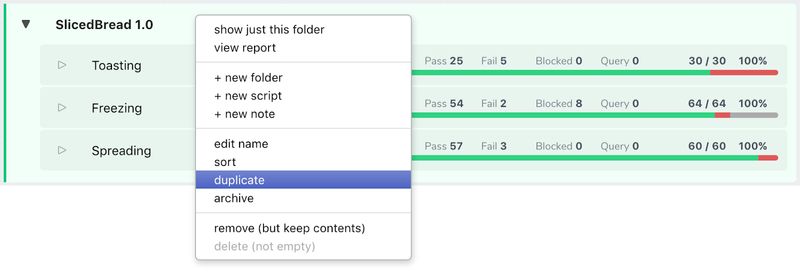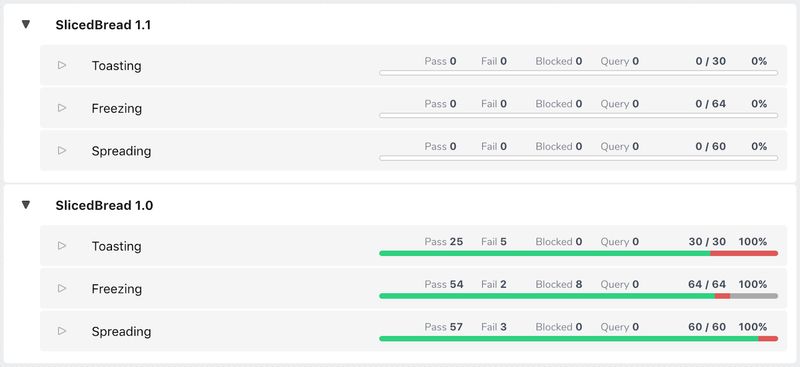Testpad Tips - make copies to go from release to release

Testpad Tips - make copies to go from release to release
A great usage pattern in Testpad is to prepare for new releases by copying the test plans of the previous release. This gives you a clean slate from which to add more tests and record a fresh batch of results.

his is the second post on usage tips for Testpad and is about a great way to organise tests when going from release to release. The first post was about using retesting to go from build to build within a release, but this article goes 'up a level' and looks at how to get re-use of your test plans from release to release (or Sprint to Sprint if that's your thing).
Use a Folder per Release
The simplest way to model releases is to use a whole new folder for each new release, and to populate the new folder with copies of the scripts you used last time.
When scripts are copied, all the tests and run headers(*) are copied, but the results are left behind.
A copied script is therefore like an on-the-fly template for the next release.
(*) If you hold the ALT key down when copying (either via the Duplicate menu item, or when drag'n'drop+CTRL), then the scripts are copied without the run headers too.
Example first, details below
Suppose you have a product called SlicedBread and you've just finished testing v1.0.

Prepare for v1.1 by right-clicking to Duplicate the folder.

Finally, rename the new folder to e.g. SlicedBread 1.1 and it's ready for testing the next thing since SlicedBread.

In a bit more detail
Copying the whole folder
You can copy a whole folder with a right-click on the folder name, and selecting the Duplicate option. Or you can drag'n'drop with the CTRL key held down. Either way, you get a new folder with all the contents from the previous folder copied.
Or copy the individual scripts
Alternatively, make an empty new folder for the new release, and selectively drag'n'drop+CTRL each script you want a copy of from the previous release.
This is useful if you only want a subset of the scripts from last time. If you want all of them, it's going to be quicker to just copy the whole folder as above.
(Additional detail: if you also hold down the ALT key, you get copies of scripts without the run columns.)
Or copy templates instead
Some much more complex projects, typically those involving custom configurations of components that are different from release to release, might instead look to populate a new release folder with scripts taken from a Library of Templates. Templates are nearly the same as scripts, except Templates never collect results, and only ever exist to be copied to make a script from.
Use templates (or folders of templates) by dragging and dropping onto the Project Name (over on the left) that you want the template copied into. Then go to that Project and move the new scripts (which are created at the top of the project) into the right folder.
Keeping a record of the previous release
The whole point of making copies for new releases is to leave intact the tests and results from last time.
Tests need to be updated in step with each evolution of a product, and it would be a shame to lose the consistent record of what was tested and with what results if the old scripts were then edited to add new features etc.
Instead, by working on new copies, the old tests and results are left alone, and the new copies can be edited as much as required to bring them up to date for the latest version of the product.
Archiving old Releases
And to keep the interface tidy, it helps to archive away old releases once they're only needed for their reports.
Archive a folder by right-clicking on its name and selecting the Archive option.
Find archived scripts and folders via the Archived Scripts link at the bottom of the list of scripts and folders for a project.
This is archiving within a project, and is most relevant for archiving old releases. Which is not to be confused with archiving a whole project (right-click on the project name over on the left and select Archive) for when you don't need a whole project to be around anymore.
Please get in touch if you need any help with how to apply these ideas to your projects... just email stef@testpad.com.
